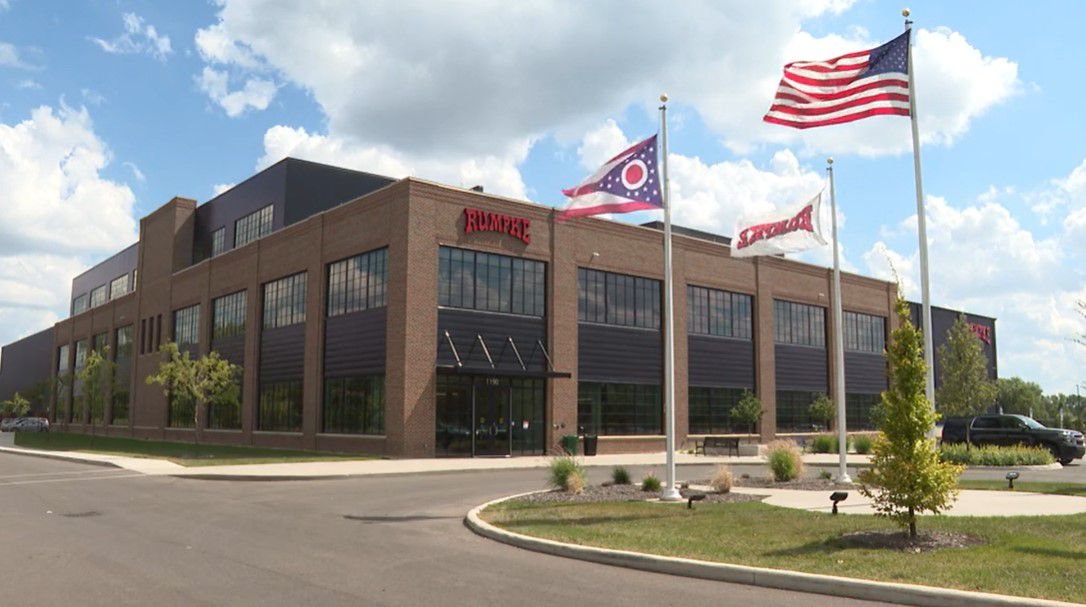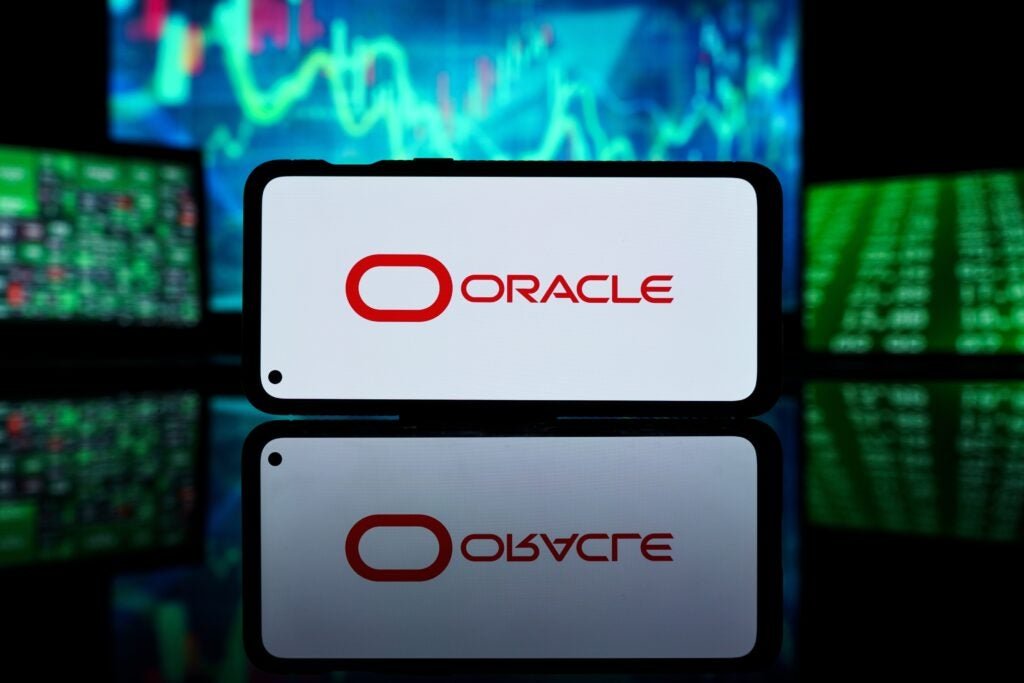Tools & Platforms
AI plays hefty role in tackling cargo theft, Werner exec says
With the rise of cargo theft incidents, carriers need a toolbox of varied solutions to both prevent incidents before they occur and to address problems afterward.
In 2024, incidents of cargo theft were up 27% year over year, reaching historic highs exceeding $1 billion, according to a July 16 testimony from David Glawe, president and CEO of the National Insurance Crime Bureau.
Glawe said that figure is set to rise another 22% in 2025 while “other estimates suggest that cargo losses may reach up to $35 billion annually.”
The rise of cargo theft has been a focus of the trucking sector, drawing attention through industry warnings and reports, congressional hearings and carrier interventions. One tool carriers are increasingly highlighting to combat cargo theft is artificial intelligence.
For example, Landstar System said in a May earnings call it was investing significantly in technology and AI and stressed how ongoing vigilance is needed.
“It’s playing a pretty hefty role,” said Werner Enterprises SVP of Logistics Jordan Strawn during an Aug. 28 webinar.
For Werner, technology and AI investment are nothing new. Besides using tech to combat cargo theft, Werner is also focusing on technological advances to fuel its logistics growth,, including through its branded EDGE TMS.
The company is also scaling the use of conversational AI calling and notifications for reminders and communication with new hires, associates and brokerage carriers, CEO Derek Leathers said in a Q2 earnings call.
Leveraging AI before theft happens
Werner conducts a carrier vetting process that is extensive when deciding to do business and “we’re leveraging AI to understand who it is we’re working with,” Strawn said.
Being able to know who you’re working with before accepting business can help lower the risk of cargo theft. Data is consumed during the vetting process, after which AI is leveraged to understand what the information means and if it makes sense for Werner to move a load.
One strategy the company employs is to analyze what a carrier does within Werner’s network.
“If they’re moving a load from Dallas, I think we typically see them in the Southeast, and the furthest they stretch out is maybe out of the Southwest,” Strawn said. Then, if that same customer wants a load that’s coming from the Northeast going to the West Coast, Werner leverages AI to consume and aggregate the information so it can make an informed decision about whether to take on the load
Leveraging tech after theft happens
“There’s a really cool tech out there right now that helps us on the backside if equipment gets stolen, or if a load gets stolen, that’s on our third-party carrier,” Strawn said.
The tech Strawn is referring to leverages computer imagery. The third-party carrier has placed cameras all over major corridors throughout the United States, specifically focusing on areas where it expects to take in the most useful information.
Through those cameras, Werner can see snapshots of commercial vehicles to identify information such as MC, DOT, truck, trailer and tag numbers. When a load comes up missing, Werner can go to the database created by the system and enter details obtained from a shipper or surveillance.
“It’s been extremely successful. We’ve actually been able to locate and send authorities to go and stop these trucks while they’re in motion, because we followed them where they’re going,” Strawn said.
Other carriers Werner works with are becoming more open to technology, such as electronic logging device integrations.
In the past, Werner found carriers frequently unwilling to share information, but the Omaha, Nebraska-based business is leveraging ELD integrations in its TMS platform to identify where a truck is and when it arrives to its destination. This provides Werner access to data confirming a trucking is moving along a route appropriately while allowing it to safeguard against sharing information that should remain in-house, Strawn said.
If a truck is tracking on time and in the right location with the correct load, Werner will share pickup information with carriers and safeguard that process through multifactor authentication, he added.
Tools & Platforms
US Senator Cruz Proposes AI ‘Sandbox’ to Ease Regulations on Tech Companies

Republican U.S. Senator Ted Cruz introduced a bill on Wednesday that would let artificial intelligence companies apply for exemptions to federal regulation to help them experiment in developing new technology.
Cruz leads the Senate Commerce Committee, which held a subcommittee hearing on Wednesday about ways Congress can lower regulatory hurdles for the tech industry to give U.S. companies a boost in competing with China.
“A regulatory sandbox is not a free pass. People creating or using AI still have to follow the same laws as everyone else,” Cruz said at the hearing.
If passed by Congress, the bill would allow agencies that oversee federal regulations to consider applications from companies to be exempt from regulations for two years at a time, and require companies to outline the potential safety and financial risks and how they would mitigate them.
Consumer rights advocacy group Public Citizen raised concerns about provisions in the proposal that would allow the White House’s Office of Science and Technology Policy to override decisions by agency heads, and said the proposal “treats Americans as test subjects.”
“The sob stories of AI companies being ‘held back’ by regulation are simply not true and the record company valuations show it,” said J.B. Branch, Public Citizen’s Big Tech accountability advocate.
Cruz’s sandbox bill does not include a ban on state regulation, something that the tech industry has sought and the White House has said is necessary to boost innovation. A bid to put a ban in place as part of President Donald Trump’s tax-and-spending bill was defeated in the Senate on a 99-1 vote in July.
OSTP Director Michael Kratsios said at the hearing that Congress should reconsider the issue.
“It’s something that my office wants to work very closely with you on,” he told Cruz at the hearing.
Topics
USA
InsurTech
Legislation
Data Driven
Artificial Intelligence
Tech
Was this article valuable?
Here are more articles you may enjoy.
Interested in Ai?
Get automatic alerts for this topic.
Tools & Platforms
Recycling facility uses AI to transform waste management

COLUMBUS, Ohio — A new high-tech recycling center in central Ohio is transforming the way recyclables are processed, and it’s putting artificial intelligence to work in a big way.
Rumpke Waste & Recycling, a family-owned company with more than 90 years of experience, has opened what it calls the most advanced recycling facility of its kind in North America.
At 226,000 square feet, the $100 million plant in Columbus is designed to process up to 250,000 tons of recyclables each year.
“We can do that at a rate of 60 tons per hour,” said Amanda Pratt, Rumpke’s Senior Vice President of Communications.
With 19 optical scanners, four ballistic separators, and cutting-edge AI technology, the facility sorts and separates each item with incredible precision.
“We’re built for growth. We’re built for the population of today as well as the population well into the future,” Pratt said.
The process begins on the tipping floor, where trucks unload loose materials collected from homes and businesses. From there, the materials are loaded onto a conveyor with a drum feeder and sent to spinning tubes called trommels.
“Those spinning trommels remove materials or separate materials according to size,” she explained.
Then, the sorted material moves along a conveyor to the presort line, where employees manually remove any items that shouldn’t be in the recycling stream.
“Next up, the material reaches a set of ballistic separators,” she continued.
These separators split the paper and fiber materials from the rest, sending them to different conveyors. Then come the optical sorters, some of which are powered by artificial intelligence, identifying and sorting materials based on shape, size and even color. After that, metals are separated, such as aluminum and steel.
The last step is baling, compressing the materials into massive blocks before they’re shipped out. They weigh between 800-2,000 pounds each.
“And the best part is about 80% of the material that we’re processing right here, stays in the state of Ohio and is sent to manufacturers right here in the central Ohio area who are turning your recyclables into new products,” she said.
Some of the recycled material becomes everyday items like irrigation pipe, detergent containers, lotion bottles, aluminum cans, and even alcohol bottles.
The facility also includes an interactive Education Center, developed in partnership with COSI and The Ohio State University. It’s designed to help the public learn about the recycling process and the role it plays in building a more sustainable future.
From start to finish, artificial intelligence is helping Rumpke Waste & Recycling sort materials faster and more accurately than ever before, offering a glimpse at the future of recycling, and the environmental innovation happening in central Ohio.
Tools & Platforms
AI’s New Cloud King: Oracle’s Rally Could Rewrite ETF Playbooks – ARK Next Generation Internet ETF (BATS:ARKW), Global X Artificial Intelligence & Technology ETF (NASDAQ:AIQ)

Oracle Corp’s ORCL shares soared over 40% on Wednesday, a day after posting its earnings powered by booming demand for AI infrastructure, pushing CEO Larry Ellison ahead of Tesla Inc TSLA scion Elon Musk as the world’s wealthiest individual.
Beyond the headline wealth change, the move has considerable implications for ETFs, showing how AI infrastructure is becoming more integral to broad-market and thematic funds alike.
Oracle’s profits highlighted the company as a prime supplier of data center space and cloud computing for AI use. With an eye-popping $455 billion AI services backlog and multi-billion-dollar contracts such as providing OpenAI with 4.5 gigawatts of energy to power ChatGPT, Oracle made it clear to the world that it is more than a software behemoth now.
Impact On ETFs
For holders of broad-market ETFs, Oracle’s rise comes with an immediate impact on portfolio weightings. Sector-specific ETFs like Technology Select Sector SPDR XLK and Vanguard Information Technology ETF VGT stand to gain, as Oracle moves higher in the ranks of the most heavily weighted tech names. Both funds are up around 1.5% on Wednesday.
Thematic ETFs on AI, cloud, and next-generation technologies are also being rewired. If Oracle crosses $1 trillion in valuation, it joins a very exclusive group. That milestone might spark reappraisals by active managers and ETF issuers alike, potentially creating new “AI infrastructure” baskets or raising its inclusion in existing thematic funds.
Others like Global X Cloud Computing ETF CLOU, WisdomTree Artificial Intelligence & Innovation Fund WTAI, and ARK Next Generation Internet ETF ARKW might have to change exposure to reflect Oracle’s new leadership in AI infrastructure.
The ripple effects even extend to ETFs with broader innovation themes. For example, both iShares Exponential Technologies ETF XT or Global X Artificial Intelligence & Technology ETF AIQ track companies positioned to benefit from AI adoption.
Oracle’s repositioning as a critical AI infrastructure player makes it harder for ETF managers to overlook.
The Bigger Picture For ETF Investors
Investors seeking to capitalize on the AI boom have several options for gaining diversified exposure to the companies driving this growth, rather than betting on individual stocks.
This episode shows a larger trend: AI-fueled growth is no longer the exclusive domain of mainstream software or chip stocks. ETFs are keeping pace with the industry, providing investors with vehicles to harness both broad-market tech appreciation and thematic exposures in AI, cloud, and enterprise infrastructure.
Oracle’s explosive growth shows how the fortunes of a single company can cascade through dozens of ETFs, affecting flows, weightings, and sector performance.
Read Next:
Image: Shutterstock
-

 Business2 weeks ago
Business2 weeks agoThe Guardian view on Trump and the Fed: independence is no substitute for accountability | Editorial
-
Tools & Platforms4 weeks ago
Building Trust in Military AI Starts with Opening the Black Box – War on the Rocks
-

 Ethics & Policy2 months ago
Ethics & Policy2 months agoSDAIA Supports Saudi Arabia’s Leadership in Shaping Global AI Ethics, Policy, and Research – وكالة الأنباء السعودية
-

 Events & Conferences4 months ago
Events & Conferences4 months agoJourney to 1000 models: Scaling Instagram’s recommendation system
-

 Jobs & Careers2 months ago
Jobs & Careers2 months agoMumbai-based Perplexity Alternative Has 60k+ Users Without Funding
-

 Education2 months ago
Education2 months agoVEX Robotics launches AI-powered classroom robotics system
-

 Podcasts & Talks2 months ago
Podcasts & Talks2 months agoHappy 4th of July! 🎆 Made with Veo 3 in Gemini
-

 Education2 months ago
Education2 months agoMacron says UK and France have duty to tackle illegal migration ‘with humanity, solidarity and firmness’ – UK politics live | Politics
-

 Funding & Business2 months ago
Funding & Business2 months agoKayak and Expedia race to build AI travel agents that turn social posts into itineraries
-

 Podcasts & Talks2 months ago
Podcasts & Talks2 months agoOpenAI 🤝 @teamganassi

